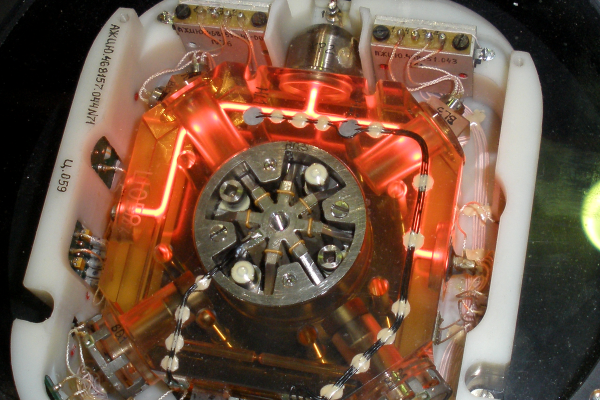As I write this, Supercon 2023 is in full swing down in Pasadena — 80 degrees and sunny at the moment, as opposed to 50 and pouring rain where I am, not that I’m bitter. Luckily, though, we can all follow along with the proceedings thanks to the livestreams on the Hackaday channel, which of course will all be available once they’re edited in case you miss anything live. There are a ton of interesting talks coming up, so there’ll be a lot to catch up on when the dust settles. And that won’t be far from now; by the time this post publishes, Supercon will be all but over, which makes it the Thanksgiving dinner of cons — all that work and it’s over in just a few minutes.
Hackaday Columns4614 Articles
This excellent content from the Hackaday writing crew highlights recurring topics and popular series like Linux-Fu, 3D-Printering, Hackaday Links, This Week in Security, Inputs of Interest, Profiles in Science, Retrotechtacular, Ask Hackaday, Teardowns, Reviews, and many more.
This Week In Security: CVSS 4, OAuth, And ActiveMQ
We’ve talked a few times here about the issues with the CVSS system. We’ve seen CVE farming, where a moderate issue, or even a non-issue, gets assigned a ridiculously high CVSS score. There are times a minor problem in a library is a major problem in certain use cases, and not an issue at all in others. And with some of those issues in mind, let’s take a look at the fourth version of the Common Vulnerability Scoring System.
One of the first tweaks to cover is the de-emphasis of the base score. Version 3.1 did have optional metrics that were intended to temper the base score, but this revision has beefed that idea up with Threat Metrics, Environmental Metrics, and Supplemental Metrics. These are an attempt to measure how likely it is that an exploit will actually be used. The various combinations have been given names. Where CVSS-B is just the base metric, CVSS-BT is the base and threat scores together. CVSS-BE is the mix of base and environmental metrics, and CVSS-BTE is the combination of all three.
Another new feature is multiple scores for a given vulnerability. A problem in a library is first considered in a worst-case scenario, and the initial base score is published with those caveats made clear. And then for each downstream program that uses that library, a new base score should be calculated to reflect the reality of that case. Continue reading “This Week In Security: CVSS 4, OAuth, And ActiveMQ”
2000-Year Old Charred Manuscripts Reveal Their Secrets
Imagine trying to read a 2000-year old scroll from an ancient civilization. Now imagine that scroll is rolled up, and in a delicate, charred, carbonized form, having been engulfed by the fiery eruption of a volcano. The task would seem virtually impossible, and the information in the scroll lost forever. Right?|
As it turns out, new developments are changing that. Modern scanning techniques and machine learning tools have made it possible to read fragments of the heavily-damaged Herculaneum scrolls. Hopes are now that more of the ancient writings will be salvaged, giving us a new insight into the ancient past.
Continue reading “2000-Year Old Charred Manuscripts Reveal Their Secrets”
Fancy Gyroscopes Are Key To Radio-Free Navigation
Back in the old days, finding out your location on Earth was a pretty involved endeavor. You had to look at stars, use fancy gimballed equipment to track your motion, or simply be able to track your steps really really well. Eventually, GPS would come along and make all that a bit redundant for a lot of use cases. That was all well and good, until it started getting jammed all over the place to frustrate militaries using super-accurate satellite-guided weapons.
Today, there’s a great desire for more accurate navigational methods that don’t require outside communications that can easily be jammed. High-tech gyroscopes have long been a big part of that effort, allowing the construction of inertial navigation systems with greater accuracy than ever before.
Continue reading “Fancy Gyroscopes Are Key To Radio-Free Navigation”
Supercon 2022: Carrie Sundra Discusses Manufacturing On A Shoestring Budget
Making hardware is hard. This is doubly true when you’re developing a niche hardware device that might have a total production run in the hundreds of units instead of something mass market. [Carrie Sundra] has been through the process several times, and has bestowed her wisdom on how not to screw it up.
The internet is strewn with the remains of unfulfilled crowdfunding campaigns for tantalizing devices that seemed so simple when they showed of the prototype. How does one get something from the workbench into the world without losing their life savings and reputation?
[Sundra] walks us through her process for product development that has seen several products successfully launch without an army of pitchfork-wielding fiber crafters line up at her door. One of the first concepts she stresses is that you should design your products around the mantra, “Once it leaves your shop IT SHOULD NEVER COME BACK.” If you design for user-serviceability from the beginning, you can eliminate most warranty returns and probably make it easier to manufacture your widget to boot. Continue reading “Supercon 2022: Carrie Sundra Discusses Manufacturing On A Shoestring Budget”
Saving Australia’s Ants With Age Of Empires II
Australia’s native meat ants are struggling. Invasive species of foreign ants have a foothold on the continent, and are increasingly outcompeting their native rivals for territory. Beyond simple encroachment, they pose a hazard to native animals and agriculture.
Scientists at the CSIRO have been investigating the problem, hoping to find a way to halt the invasion. Charged with finding a way to help Australia’s native ants fight back, they turned to one of the most popular battle simulations of all time: Age of Empires II.
Continue reading “Saving Australia’s Ants With Age Of Empires II”
Hackaday Links: October 29, 2023
“As California goes, so goes the nation.” That adage has been true on and off for the last 100 years or so, and it’s true again now that GM’s Cruise self-driving car unit has halted operations across the United States, just a couple of days after California’s DMV suspended its license to conduct driverless tests on state roadways. The nationwide shutdown of testing was undertaken voluntarily by the company and takes their sore beset self-driving taxi fleet off the road in Phoenix, Houston, Austin, Dallas, and Miami, in addition to the California ban, which seemed to be mainly happening in San Francisco. Cruise’s fleet has suffered all manner of indignities over the last few months, from vandalism to “coning” pranks to even being used as rolling hookup spots, and that’s not to mention all the trouble they caused by brigading to the same address or losing games of chicken with a semi and a firetruck. We’re not sure what to make of all this; despite our somewhat snarky commentary on the company’s woes, we take little pleasure in this development other than to the degree it probably increases roadway safety in the former test cities. We really do want to see self-driving cars succeed, at least for certain use cases, but it seems like this is a case of too much, too soon for the technology we currently have at our disposal.
















